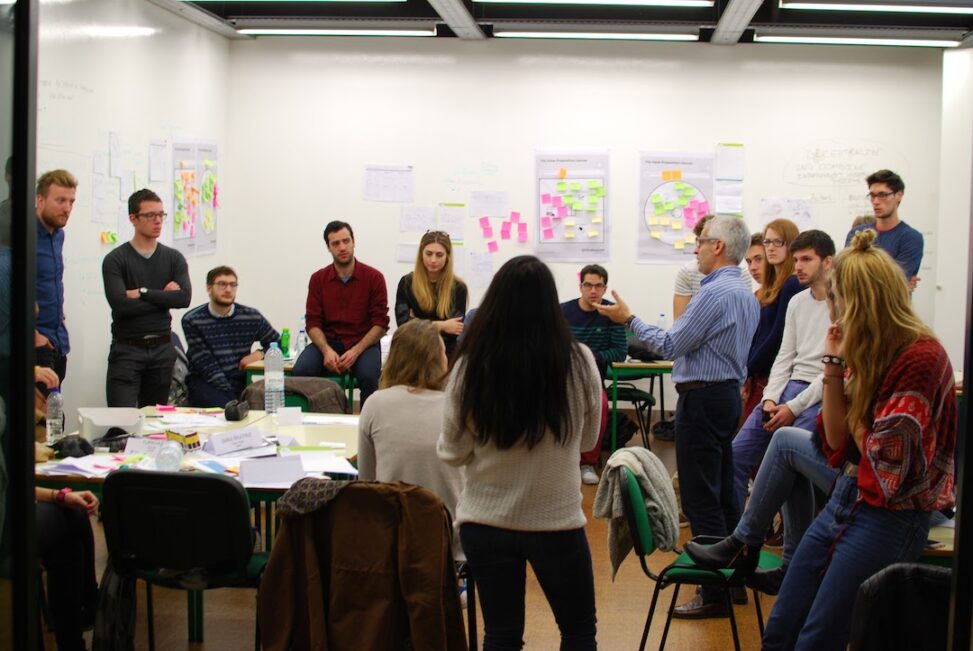You have surely heard someone question the true value of higher education when many graduates are successful in areas other than those in which they have graduated. At a time when there are increasingly better training courses available online and social networks that connect people with common interests, what is the true value of the University? The answer is, in my opinion, the relationship between the teacher and the student and the ability of the first to challenge the second and to accompany him throughout the learning process while looking for solutions to these challenges.
Choosing challenges is not an easy process, as they have to adapt to the students ‘abilities and learning objectives, the results need to be assessed and they must motivate students to maintain their interest during the difficulties they will surely face. In most cases, the problems are conceived by the teachers themselves, sometimes inspired by real problems, but sufficiently simplified in order to have all the necessary data for an optimal solution that will be used as a reference for the evaluation of the students. The main drawback of these types of challenges is the lower motivation of students to seek a solution that the teacher already knows and the disincentive to collaborate with colleagues who compete in solving the same problem. What would be interesting was to be able to combine the learning process together with real-world problems. But how to do it?
In the case of engineering education, technological evolution has led to a movement of change in top higher education institutions. The digitization of the economy has had a major impact on engineering practice, generalizing agile product development methodologies with extremely short cycles, in order to respond to the rapid changes in the markets. This has led employers to look for graduates with more than solid and up-to-date knowledge: engineers must be innovative, self-motivated, used to working in diverse environments, able to find creative solutions to poorly formulated problems in contexts of high uncertainty.
Engineering schools need to find ways to add to technical training, the possibility of applying these skills to solutions to problems as they arise in the real world, in order to develop an innovative mindset in students. It is in this context that organic units dedicated to promoting entrepreneurship and innovation have been created, as interfaces between the academic learning and research environment and the innovation ecosystem external to the University, including companies, governmental and non-governmental organizations, investors, etc. In the case of Técnico, this unit is called iStartLab, starting with the letters IST inscribed on the shield that is the school logo.
As in similar institutions, iStartLab offers students space to meet in learning and co-creation activities, as well as space and equipment for the construction of their prototypes. The main objective of iStartLab is to take students to action, applying their new knowledge and avoiding over-planning. In a previous chronicle (“Do You Have an Innovation Mindset?”, 7-Jan-2019) I mentioned that the innovation mindset can be broken down into 7 dimensions: trust in others, resilience, diversity, self-confidence, the ability to collaborate, awareness of resources and the ability to deal with uncertainty. These characteristics are trained when we challenge students to work in groups to create solutions to real-world problems.
To achieve its goal, iStartLab will develop the process of finding appropriate challenges for students. It is necessary to ensure that the challenge has the appropriate degree of complexity, is sufficiently generic, can lead to results within the set deadline, meets the learning objectives, that there is funding for the costs of developing the prototypes and the commitment a problem “owner” willing to work with the students. This last requirement is essential to enable the generation of creative solutions but limiting them to those that are achievable. The “owner” of the problem should not bring the solution with him: the objective is to make students create a solution and not to implement a solution imposed on them.
The problem of looking for challenges to be used by students in learning processes may seem simple, but the combination of these requirements makes the task difficult. The effort spent by iStartLab innovation team in the assessment and adequacy of the proposed challenges is one more confirmation of the principle that we should spend more time defining the problem than looking for the solution. If you have a challenge for us, visit us at https://istartlab.tecnico.ulisboa.pt/.
Adapted from my Jornal i column, Jan 28th, 2020

 Português
Português